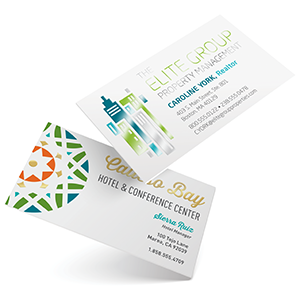 Whether you are looking for a way to connect with new customers or you’re hoping to have a good conversation with other professionals, a networking event could be a great way to create those new connections. However, these events are what you make them, and creating a quality connection is as much about your skills at networking as it is about the event. Here are four networking tips you must know.
Whether you are looking for a way to connect with new customers or you’re hoping to have a good conversation with other professionals, a networking event could be a great way to create those new connections. However, these events are what you make them, and creating a quality connection is as much about your skills at networking as it is about the event. Here are four networking tips you must know.
1. Listen When You Join A Conversation—And Show That You’ve Been Listening
When you’re approaching a group of people already engaged in conversation, take some time to listen. Not only will this allow you to have a good understanding of what the group is talking about, but it will also give you a chance to figure out if the conversation is relevant to your interests.
And, when you do join in yourself, acknowledge a point that has been made rather than refocusing the conversation on yourself. Not only will this ensure that you enter the conversation smoothly, but it will ensure that you maintain a friendly tone.
2. Don’t Focus on What You Want—Focus on What You Can Offer
You’re going to the networking event for a reason—usually to make new business connections and possibly make a sale—but don’t let that reason keep you from having a good conversation! Focus on what your customer is saying and how you can speak to the challenges they are facing in their business.
And speaking of that focus…
3. Polish Up Your Elevator Pitch
We’ve talked about elevator pitches before, and a networking event is tailor-made for these one-to-two-sentence summaries of your business. And you can tailor your pitch according to the event. If you’re going to a networking event for social reasons, keep your pitch focused on who you are as a print professional. If you are going to the event to connect with prospective customers, keep the pitch focused on what your business can do for them.
4. Find a Reason to Follow Up
If you’ve established a rapport with someone, keep that relationship going! Once you’ve got their contact information, be sure to reconnect within a week of meeting them. Whether it’s sending an article relevant to the topic you discussed or giving them a call to discuss their product needs, finding a practical reason to follow up can help keep the conversation going.
How do you make the most out of your networking efforts? We’d love to see your suggestions in the comments below.
 Are your customers looking for a way to add polish to their business cards to make a more memorable first impression? Do they want to make their announcements for an upcoming event extra-special? Do they want the postcard for their next mailing to be truly showstopping?
Are your customers looking for a way to add polish to their business cards to make a more memorable first impression? Do they want to make their announcements for an upcoming event extra-special? Do they want the postcard for their next mailing to be truly showstopping? Take a look at your desktop. If it’s anything like mine, you probably have a cup full of pens, pencils, and markers at the ready for taking notes, signing forms, and more. And chances are that at least some of your pens or pencils will be branded promotional pieces. Your customers might be interested to know just how effective pens and pencils can be at promoting their business.
Take a look at your desktop. If it’s anything like mine, you probably have a cup full of pens, pencils, and markers at the ready for taking notes, signing forms, and more. And chances are that at least some of your pens or pencils will be branded promotional pieces. Your customers might be interested to know just how effective pens and pencils can be at promoting their business.